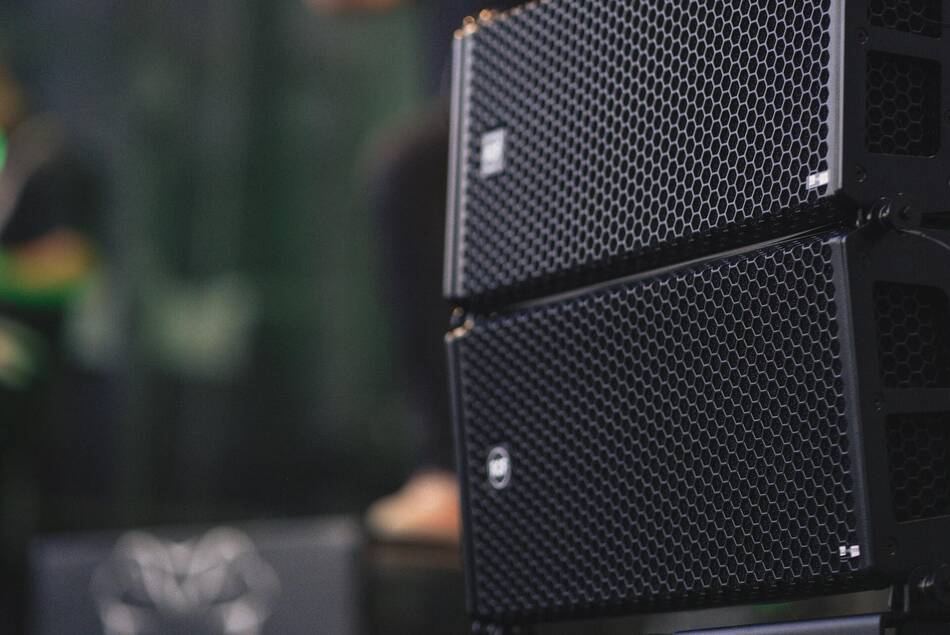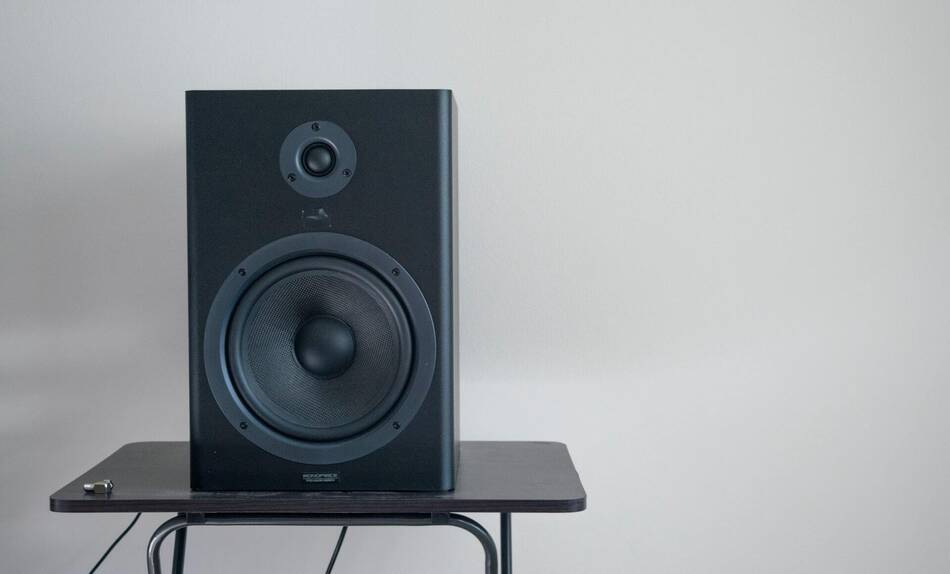
Perhaps you just got into music production, and you can’t afford to spend money on a new pair of studio monitors. And you want to use your PA speakers as m
In short, no. PA speakers cannot be used as studio monitors. It’s not possible to get a great sounding mix using PA speakers as you would using studio monitors. That’s because PA speakers don’t have a flat frequency response that is required for a good mix.
PA Speakers vs Studio Monitors: What’s the Difference?
The only similarity between PA speakers and studio monitors is that they are both speakers. Besides that, these are two totally different types of speakers with different purposes.
Here is the main difference between PA speakers and studio monitors in two sentences.
PA speakers are designed to project sound to a large group of people. On the other hand, studio monitors are used by audio professionals in recording studios, radio studios, filmmaking and home studios for audio production purposes.
Allow me to explain the difference in much detail. And it’s important to know, especially if you are planning to use your PA speakers as studio monitors. Let’s get into it.
PA Speakers

I already have an in-depth article on PA speakers on this blog that is definitely worth reading. Feel free to check it out here.
However, I’m going to summarize everything I talked about in that article and more on this one.
For those who don’t know, the “PA” in PA speakers is an abbreviation that stands for public address. So you might as well call it public address speakers.
Just from its name, you should know what these speakers are designed for. PA speakers are speakers that are used to publicly address a group of people. These speakers are uniquely made to project sound to a large group audience.
The existence of PA speakers dates to 1910. And they were primarily used to deliver speeches and make announcements to people in an area.
Now times have changed, and PA speaker technology has improved tremendously from how they originally were back in the days. Now PA speakers are used in concerts, churches, clubs, parties, and any other place where loud sound and music is required.
But their primary purpose hasn’t changed. They are still tools used to deliver loud sound to a large audience.
Due to this, the goal of PA speaker manufacturers is to make their speakers as loud as required. The size, shape, and circuitry inside PA speakers are all efforts made by the manufacturers to optimize them and make them as powerful as possible and project sound far and wide.
For this reason, PA speakers can get very loud. A good set of PA speakers should fill an auditorium, stadium or room with sound so that people at the back can hear the sound audibly.
Studio Monitors

Just as the name depicts, studio monitors are speakers that are uniquely designed for the music and audio production studio.
These are speakers to be used by professional music producers, audio and mixing engineers, and musicians. And one thing these professionals have in common is that they want whatever music they produce, mix or master to sound as good as possible on every sound system.
Professional audio engineers monitor whatever music or audio they are working on through studio monitors. They make mixing decisions based on what they hear through these monitors.
Although studio monitors are used to monitor a musical performance during a recording session and used for casual music listening, they are mainly used for mixing and mastering audio to make them sound balanced and professional.
By playing back their music through studio monitors, they can decide whether to increase or reduce the low frequencies, cut the highs, or boost the mids.
For this reason, studio monitor manufacturers’ primary goal is to make their monitors as accurate sounding as possible. Their main focus is to make studio monitors that playback all audible audio frequencies at the right loudness level.
This way, professional audio engineers and music producers can make the right mixing decisions and have total confidence that their work will sound good in different audio systems.
One of the most sought-after studio monitors used by audio and recording engineers, music producers, and mixing engineers is the Yamaha HS series, especially the Yamaha HS8 Studio Monitors (on Amazon).
Many mixing engineers have relied on this studio monitor for years, and they always get the job done. I wouldn’t be surprised if some of your favorite music was mixed on these studio monitors. That’s how popular they are.
It accurately reproduces the actual sound of any audio, and this helps to mix engineers make accurate mixing decisions which eventually leads to better and professional sounding music.
Can You Mix with PA Speakers?
PA speakers are not good for mixing, and you cannot mix professional-sounding music with them. That’s because most PA speakers don’t have a flat frequency response. This means the sound output will not be accurate to make the right mixing decisions. And your mix will not sound good in other audio systems when PA speakers are used.
One of the most important components of having an excellent mix is to have a good pair of accurate-sounding reference monitors.
There are other equally important factors like the room acoustics and the performance and recording of the music itself. They all play an important role in having a great-sounding mix.
The main purpose of PA speakers is to output sound that is loud enough for a large group of people to hear loud and clear. As I’ve already discussed, manufacturers put their effort into optimizing these speakers to play as loud as possible with less to no distortion.
Their focus is to make these speakers sound accurate. It is the responsibility of the Front of House mix engineer to use these PA speakers to make them sound close to accurate and balanced in whatever location they are using them.
So, yes. You can try to mix with PA speakers, and they will definitely sound good in those speakers. However, they won’t sound well-mixed in different sound systems.
Why PA Speakers Cannot Be Used as Studio Monitors
Here are three reasons why you can’t use PA speakers as studio monitors
1. PA speakers are too loud
PA speakers are intentionally designed to play audio as loud as possible. And that’s because it meant to project sound to a large audience. And for the same reason, PA speakers sound their best when the volume is cranked up.
Studio monitors, on the other hand, are much quieter and not as powerful as PA speakers. It provides enough sound output for a single person or small group of people to hear clearly.
And because PA speakers are loudspeakers, it can cause ear fatigue due to their loudness when you try to use them as studio monitors. And you certainly don’t want that to happen.
2. PA speakers don’t have a flat frequency response
Another major reason why you can’t use PA speakers is that they don’t have a flat frequency response.
Well, what do I mean by this?
For a speaker to reproduce sound as accurately as possible, it needs to have a flat frequency response. This simply means the audio received from the amplifier by the speakers should be played back by the speakers exactly as it is. It must be able to reproduce the exact frequencies at the exact volume.
However, this is not the case for PA speakers. PA speakers usually have enhanced mid-frequencies. This means the mid-frequencies are a bit louder than the highs and lows. And this results in biased sound output. This is why any mixing decision done using PA speakers is certainly not ideal.
On the other hand, studio monitors are designed to have a flat frequency response (or at least close to it). This means studio monitors play any audible audio frequency at its exact loudness level. And this helps you make accurate mixing decisions.
After correctly mixing through studio monitors, your mix should sound good in many audio and sound systems.
3. PA speakers are Farfield speakers, studio monitors are Nearfield speakers
As we have already discussed, PA speakers are made to output sound for many people. They are made to project the sound farther. And that’s because the audience will be farther away from them. And that is why they are called Farfield speakers.
Usually, the audience will be 10 feet or more away from the PA speakers. For this reason, PA speakers sound better when you are farther away from them.
Studio monitors, on the other hand, are nearfield speakers. They sound their best when you are sitting closer to them.
Audio professionals usually sit 4 to 6 feet away from studio monitors. And since they are closer to them, they are able to hear all the details in audio and make corrections if they have to.
PA Speakers Can Be Used as a Mix Reference
Although PA speakers are not ideal for mixing, they are good speakers for referencing a mix.
Once you mix your music through studio monitors or headphones, it’s good practice to play the final audio through PA speakers and many other sound systems.
This is because the average music listener won’t play the music through studio monitors. So you need to reference your mix through different speakers such as laptop and phone speakers, home theater systems, car speakers and PA speakers.
Conclusion
It’s not a good idea to use PA speakers as studio monitors. You won’t get the best results using them. That’s mainly because they don’t have an accurate frequency response. If you are beginner who is just starting out, you can use it to learn mixing.
However, just keep in mind that your mix may not sound great on other audio system. You can actually get a much better result using studio headphones than PA speakers.

Hi, I’m Raymond. A keyboard player, music producer, and writer. And I’m also the founder of this blog. As someone who has been working with several audio and music equipment and different musicians for many years, my goal is to answer all your questions on music and equipment, as well as the latest music software and technology. For more info, check out my about me page

